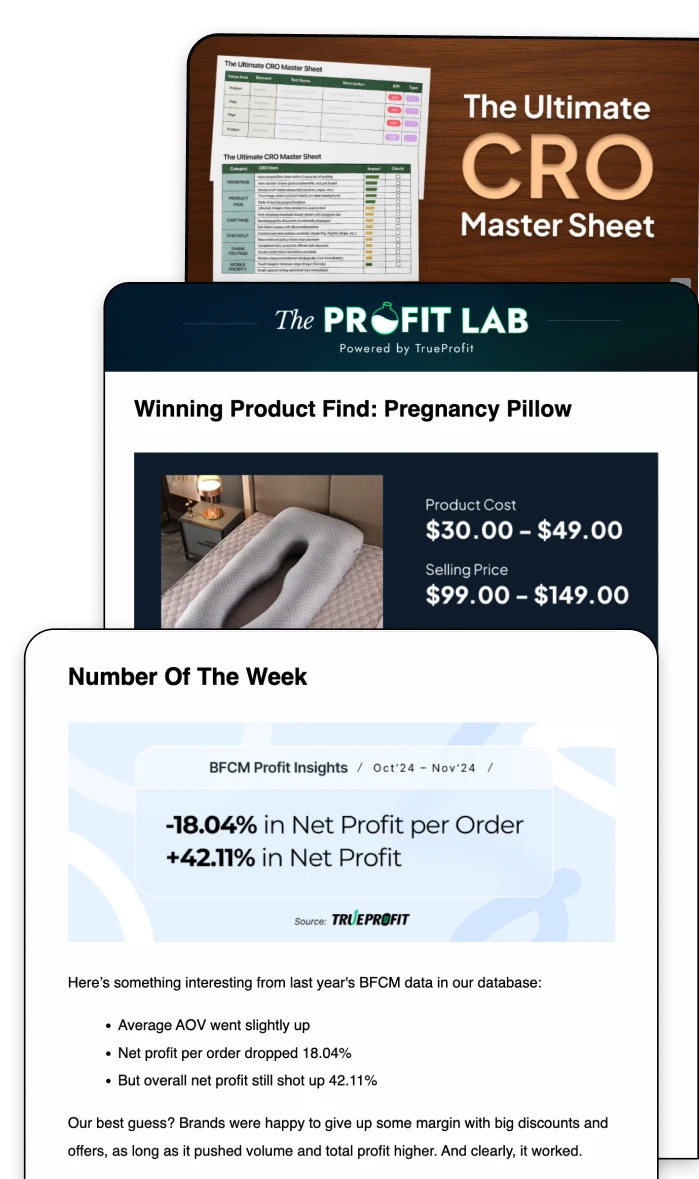Top 7 Successful One Product Shopify Stores in 2025
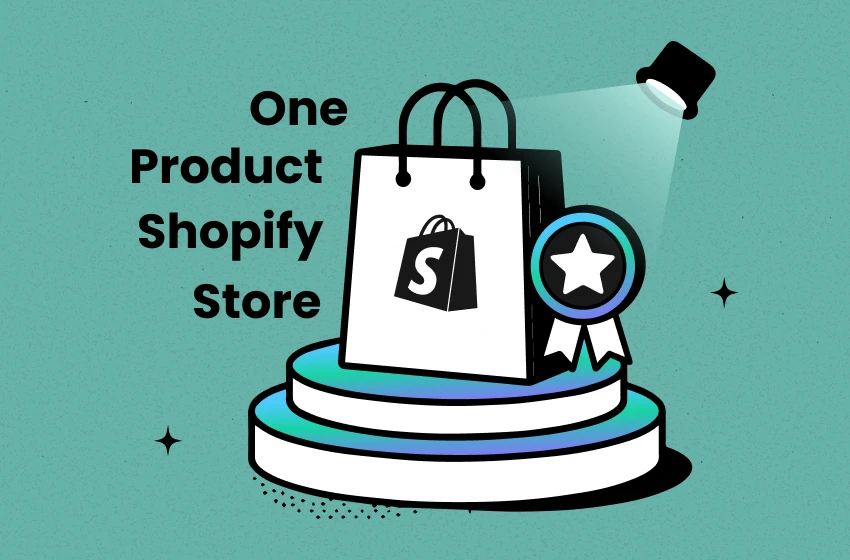
One product Shopify store — a store built entirely around that single hero product. It’s a strategy that’s been quietly powering some of Shopify’s biggest success stories.
In this article, we’ll walk you through 7 successful Shopify stores — what they sell, why they work, and what you can learn from them to build your own winning brand.
What is a One Product Shopify Store?
A one product Shopify store is the single product store that sells just one main item. Instead of giving shoppers a choice between 50 products, sellers offer one clear solution to one clear problem.
The biggest advantage of a one-product store is: The entire website design, marketing message, and customer journey are focused on promoting that single item, every move directly affects its performance. This clarity makes it easier to see measurable returns, optimize campaigns, and build a strong, recognizable brand around that one “best-selling product”.
Best One Product Shopify Stores in 2025
Here are 10 real-world examples of Shopify stores that turned one strong product into a thriving business.
Store Name | Position |
|---|---|
Death Wish Coffee | The world’s strongest coffee |
LastObject | The world’s first reusable cotton swab |
Snooz | The world’s sleepiest sound machine |
The Great Cookie | The best cake gift for every celebration |
Meow Meow Tweet | The vegan skincare brand |
Madsen Cycles | The family-friendly cargo bike brand |
Truff | The luxury hot sauce |
1. Death Wish Coffee — The World’s Strongest Coffee
Death Wish Coffee sells “the world’s strongest coffee” — a dark roast blend from Central and South America with two times the caffeine of a typical cup.

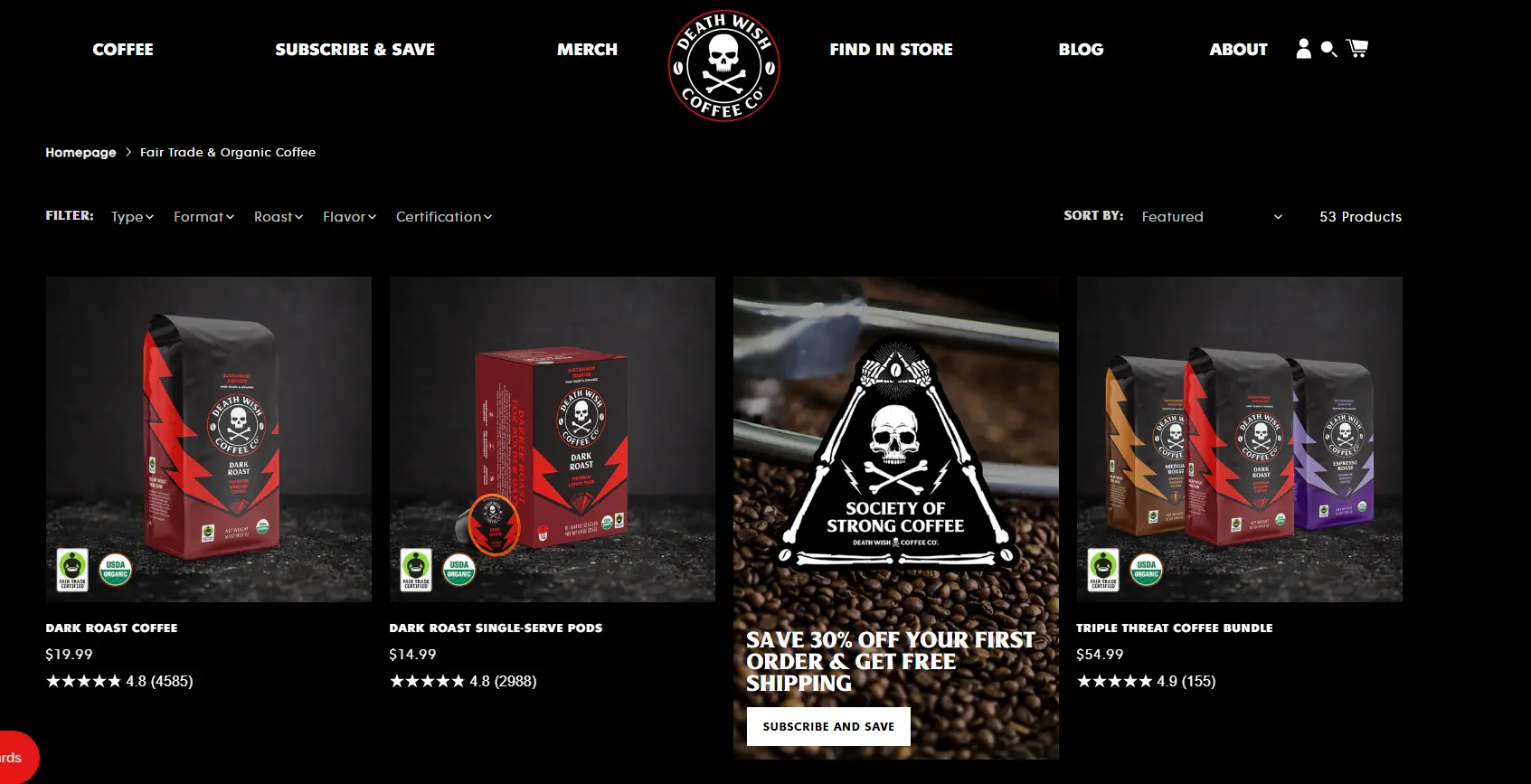
Formula for Success:
The product itself is their greatest advantage— a clear product–market fit with a strong unique selling proposition (USP) that sets it apart in the beverage industry.
But more than the product itself, what actually sells is the way they promoted the store.
The skull-and-crossbones logo, dark visuals all give Death Wish Coffee an outstanding personality. That look became so iconic that fans now buy it on mugs, T-shirts, and bags.

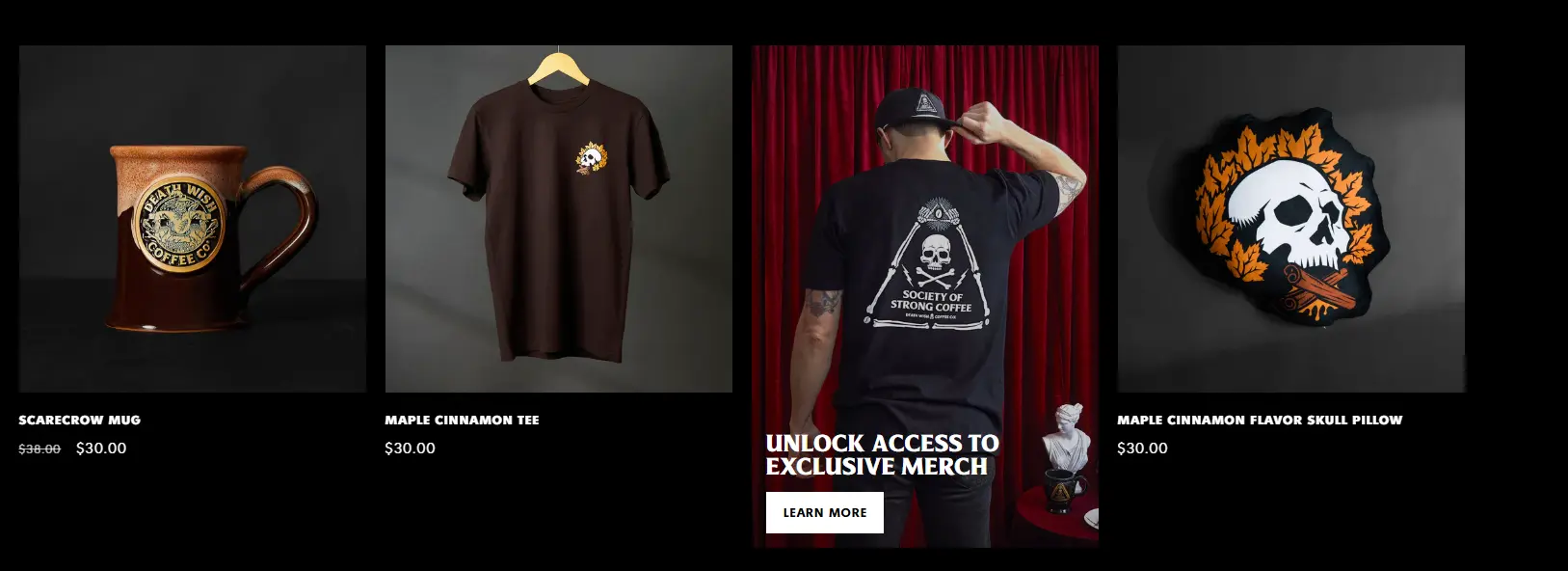
They relied heavily on organic marketing — sending samples to reporters, celebrities, and bloggers. “Ninety-nine percent of the time I don’t hear anything back,” the CEO said, “but the few who do drive peak sales.”

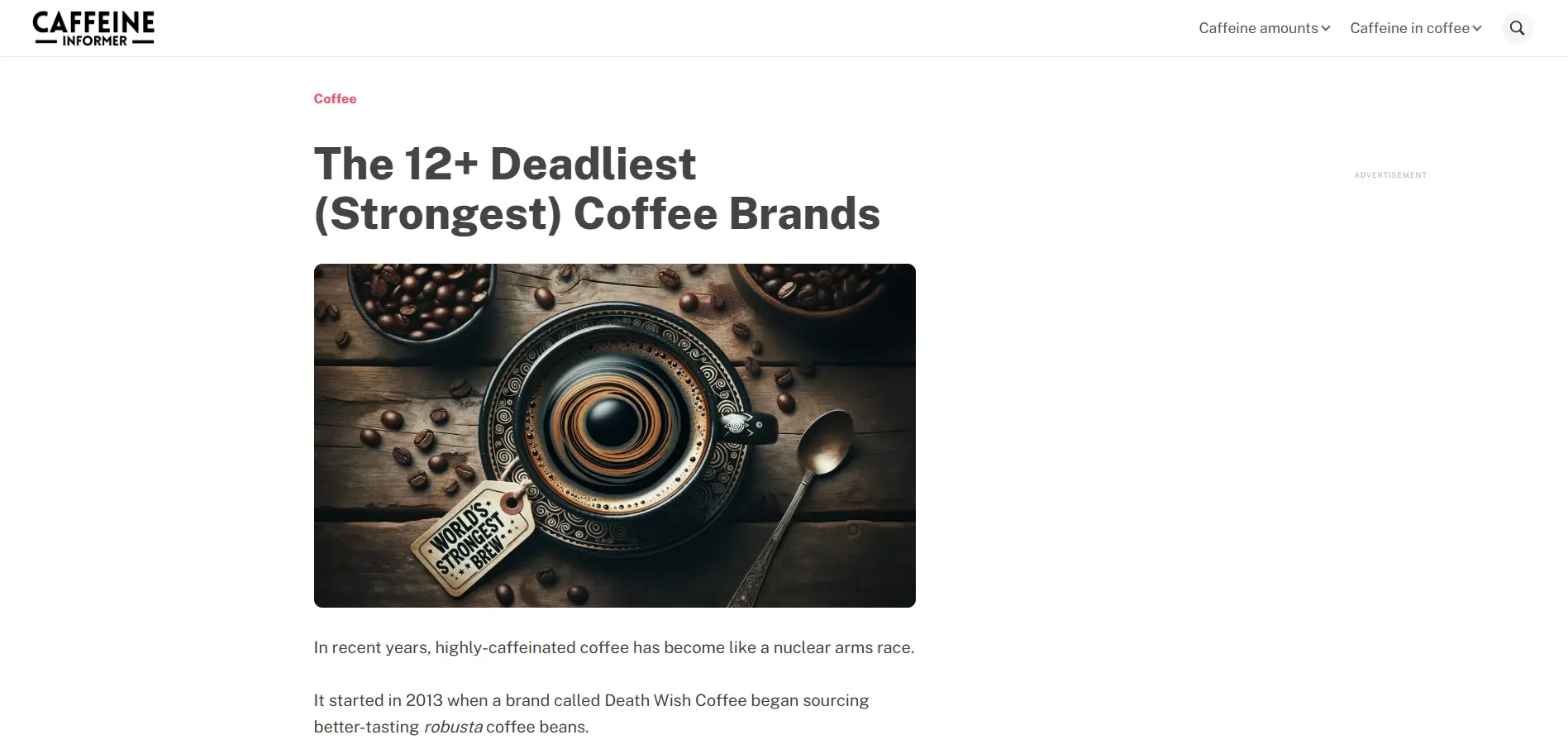
Creators also played a key role, turning the “world’s strongest coffee” into challenge and review content.


Meanwhile, the brand actively joined Twitter’s conversations, too. The goal is to earn brand names and social mentions.

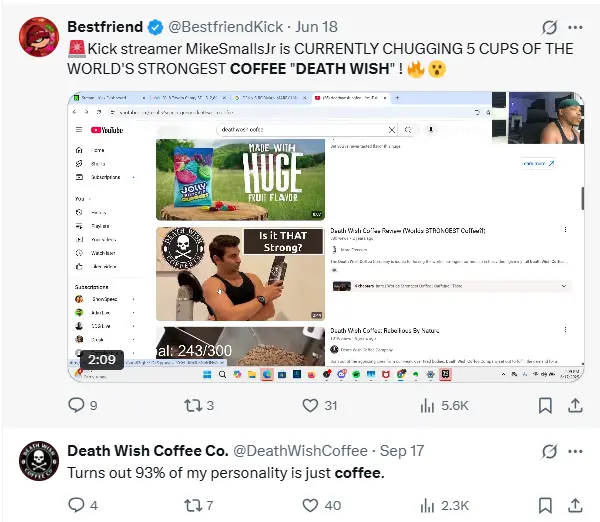
They also took Shopify SEO seriously— ensuring Death Wish Coffee appears at the top of the results for key terms like “strongest coffee” and “high caffeine coffee.”
For example, they’re recommended by Google as one of the top highest caffeine coffee.

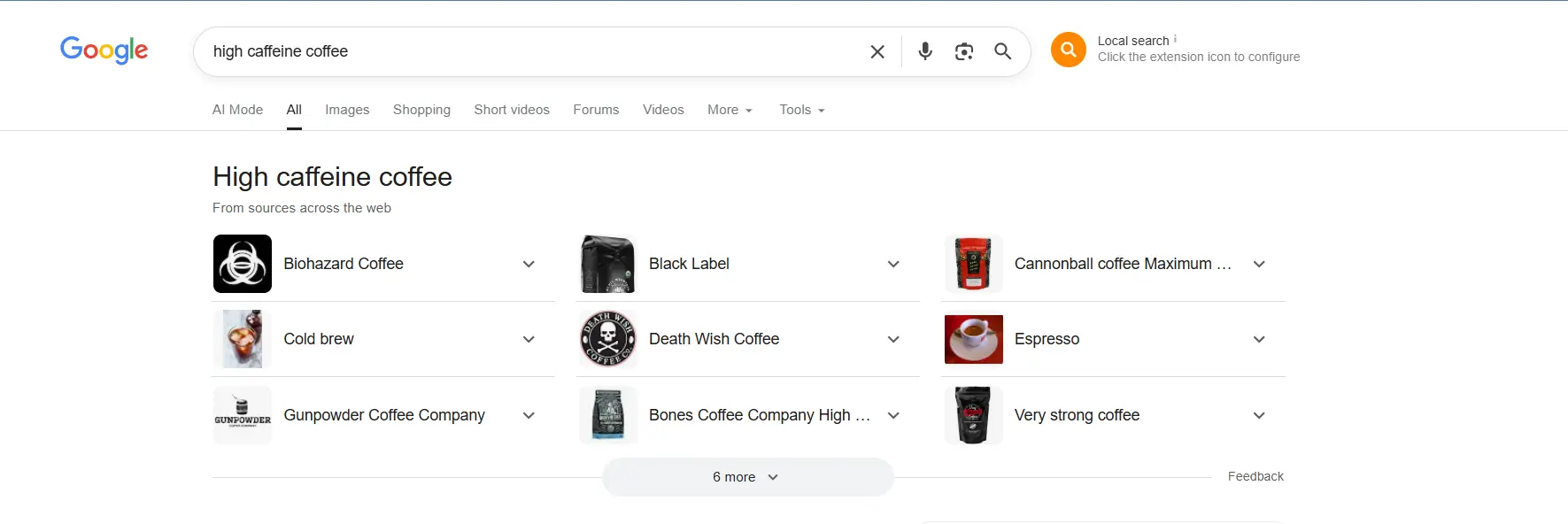
Death Wish Coffee also ranks in the top three Google results for “strongest coffee”— it’s the payoff of a strong, consistent SEO effort over time.

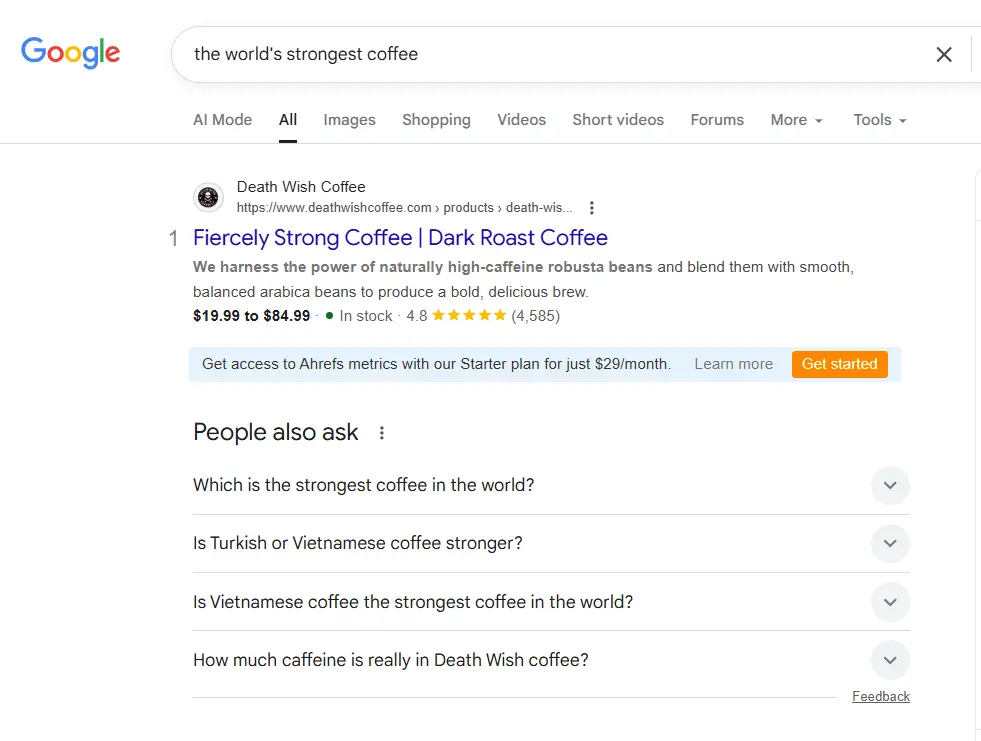
As a result, the company grew from $6 million in sales in 2015 to nearly $20 million a year later — and continues to post steady growth, reaching about $35 million in annual revenue today.
2. LastObject — The World’s First Reusable Cotton Swab
LastObject is the best known for LastSwab—the world’s first reusable cotton swab that’s designed to replace 1,000 single-use ones. Made to last, easy to clean, and packaged in eco-friendly cases, LastSwab became one of highest profit margin products in the sustainable personal care niche.

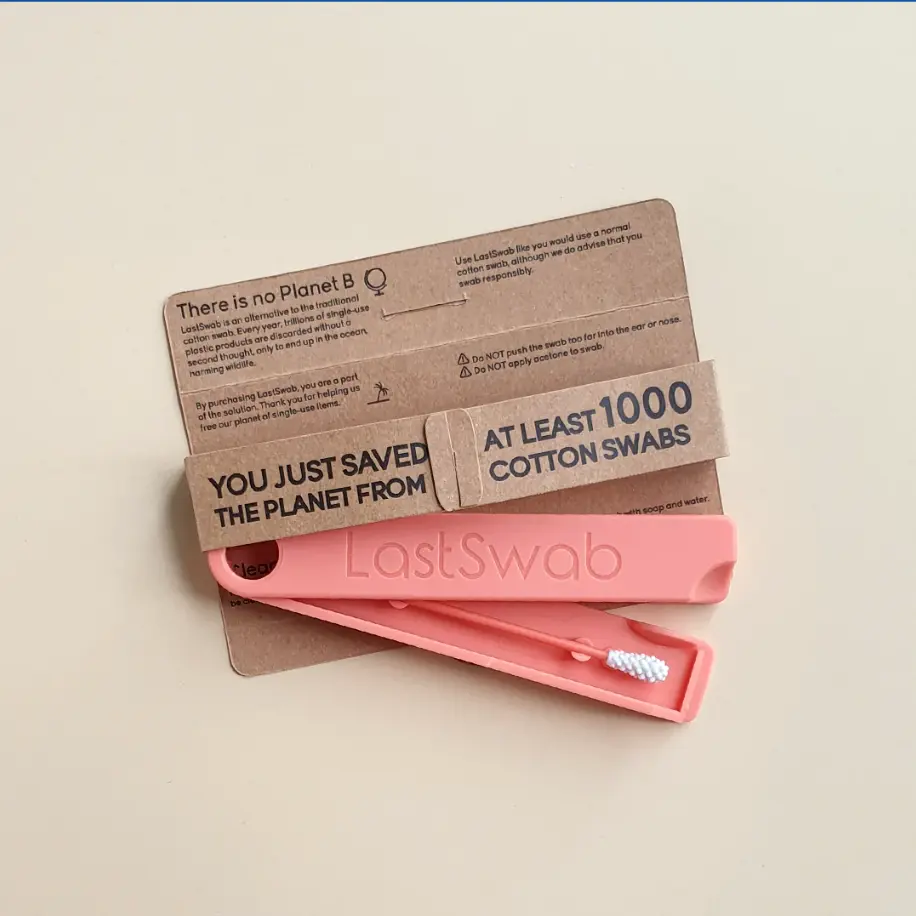
Formula for Success:
LastObject never rushed to launch. Even the best product ideas need thorough testing to ensure the market is ready for it. That’s why they tested landing pages, ran email marketing, and tracked conversions to make sure the demand was real.
First, they tested demand through email marketing campaigns and landing page A/B testing. They experimented with product visuals, headlines, and messages daily — changing one element at a time to see what resonated most. “We had no idea this was going to blow up,” said CEO. “But two weeks in, we saw how high the conversion rate was.”
Second, they personally reached out to over 2,000 micro-influencers in the sustainability space — mostly Instagram users with 1,000–2,000 followers. Instead of paying for posts, they sent free products in exchange for honest feedback and organic content.

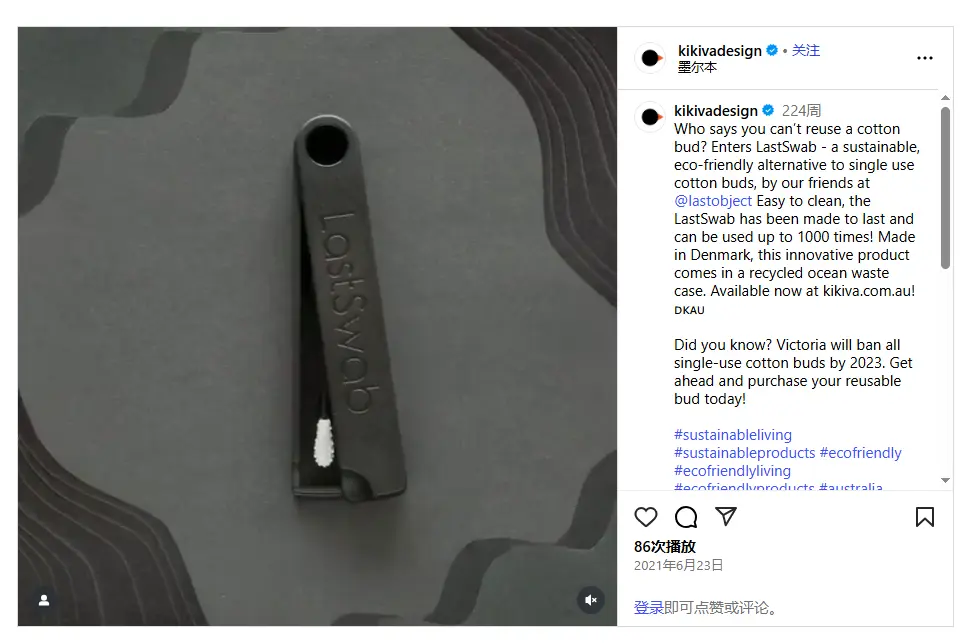
Third, the team joined Facebook groups dedicated to zero waste and sustainability, both to research and engage directly with their audience. Some groups blocked their promotional posts, but others embraced the discussions — helping LastObject refine its message and connect with people already passionate about sustainability.
As a result, what started as a small Kickstarter idea now became the top-tier brand in personal care - featured in BuzzFeed, The Guardian, The New York Post, Good Morning America, WWD, and Gadget Flow.
3. Snooz — The World’s Sleepiest Sound Machines
When SNOOZ launched its “the world's sleepiest sound machines” in 2017, it just made sleep way quieter by a real mechanical fan enclosed in an acoustic chamber. The product itself became their biggest differentiator in a crowded market of artificial-sounding devices.

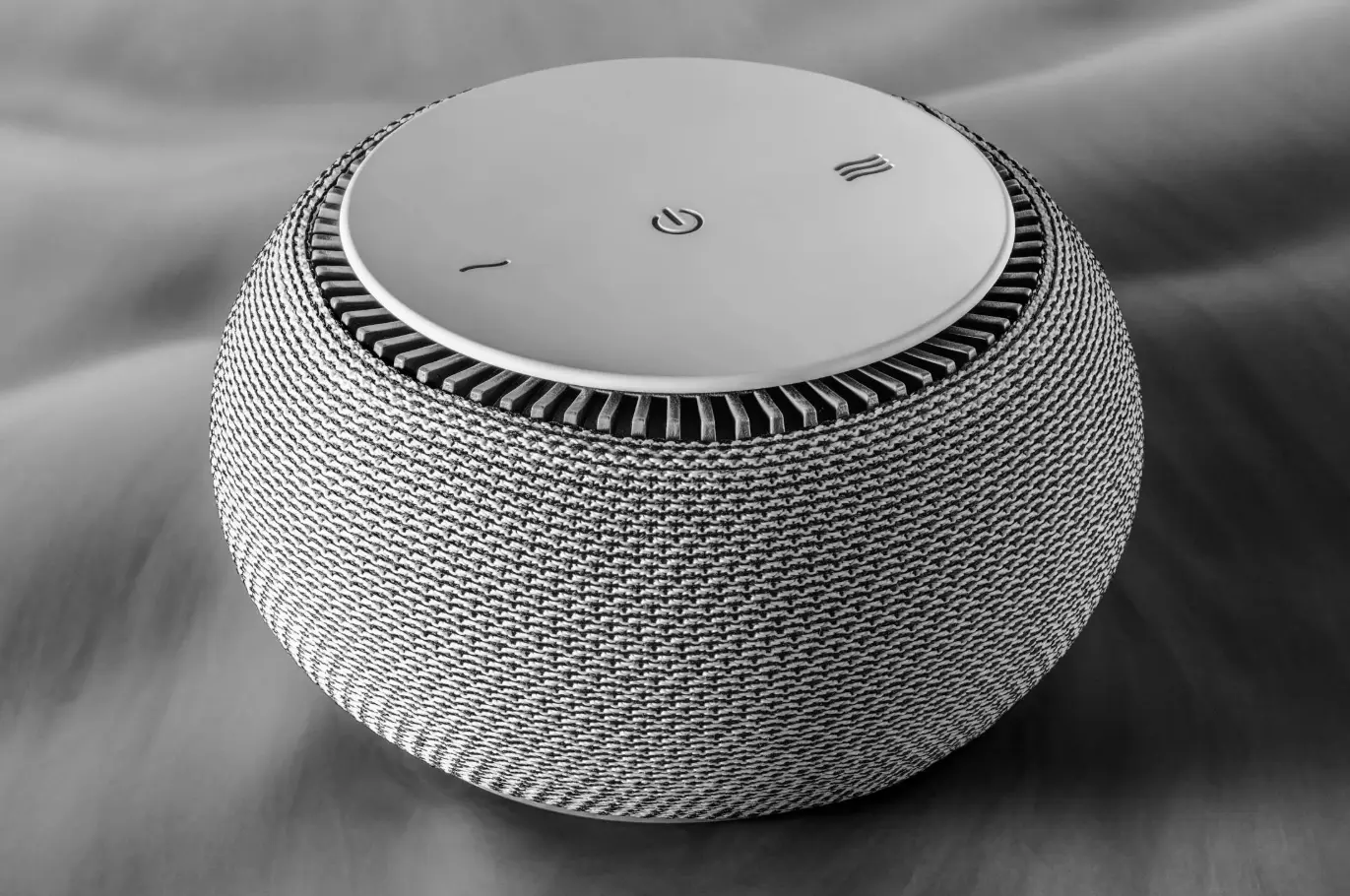
Formula for Success:
When SNOOZ started, they didn’t have millions to spend. So instead of outsourcing everything, the founders kept things small. They tested prototypes with affordable 3D printing, shipped the first 10,000 units from a family garage, and proved the demand before going big.
By focusing on proving demand before scaling, they reduced upfront risks and maximized profit margins. This method helped turn a $500K project into a sustainable, multi-million-dollar business. Today, SNOOZ has sold over 300,000 units, boasts a 4.7-star rating on Amazon, and can be found in nearly 2,000 hotel rooms across the U.S.
4. The Great Cookie — The Best Cake Gift for Celebration
The Great Cookie started as a small local bakery known for its soft, buttery Snickerdoodles and wide variety of cookies, brownies, and cookie cakes. Over the years, it positions itself as the custom cookie cakes made for every kind of celebration.

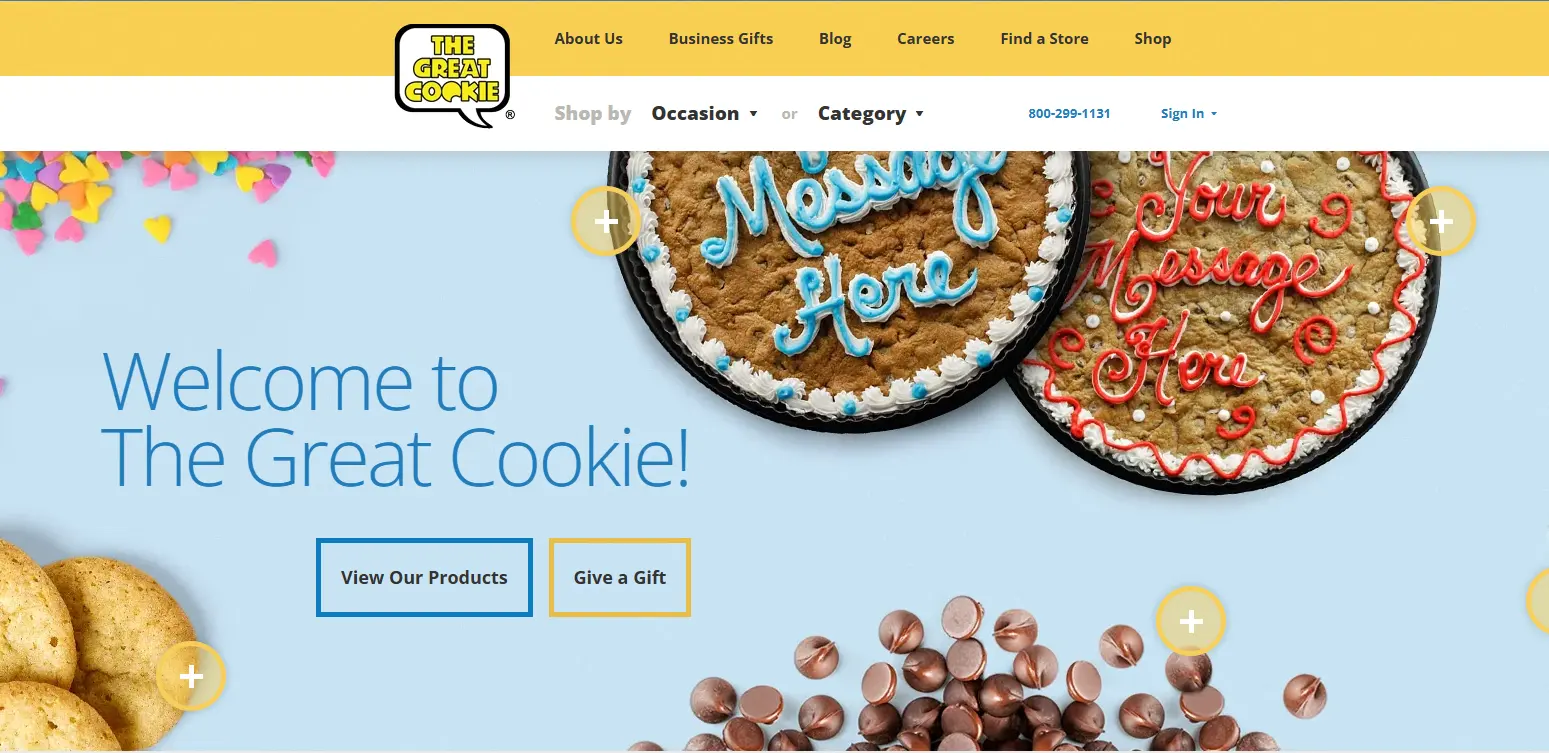
Formula for Success:
Here’s the thing: Getting sales on Shopify doesn’t always rely on ads, especially when you have a low budget but the medium email list of around 3,000 customers who hadn’t been contacted in years. The Great Cookie first move was to reconnect with existing fans through email marketing and optimize their website for search.

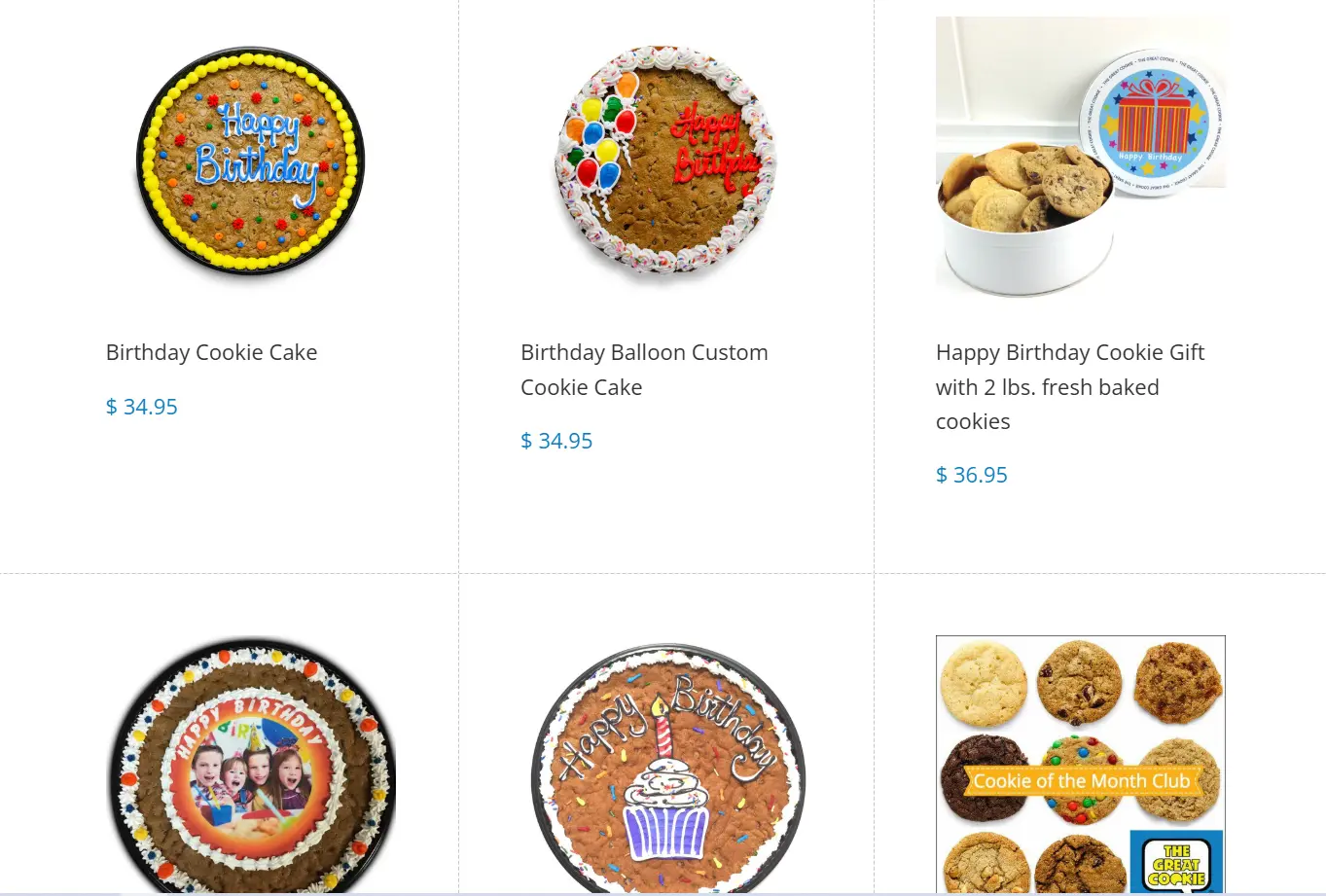
So far, The Great Cookie has relied mostly on owned and earned media to drive sales, keeping marketing costs low and conversion rates above the Shopify CR averages. Now, with plans to expand into Google Ads and cookie re-targeting, the brand is ready to turn decades of local love into nationwide recognition — proving that even a 40-year-old bakery can master digital growth.
5. Meow Meow Tweet — The Vegan Skincare Brand
Meow Meow Tweet (MMT) is a vegan, all-natural care label that sells pure, plant-based skincare — from deodorants and face creams to soaps and balms.

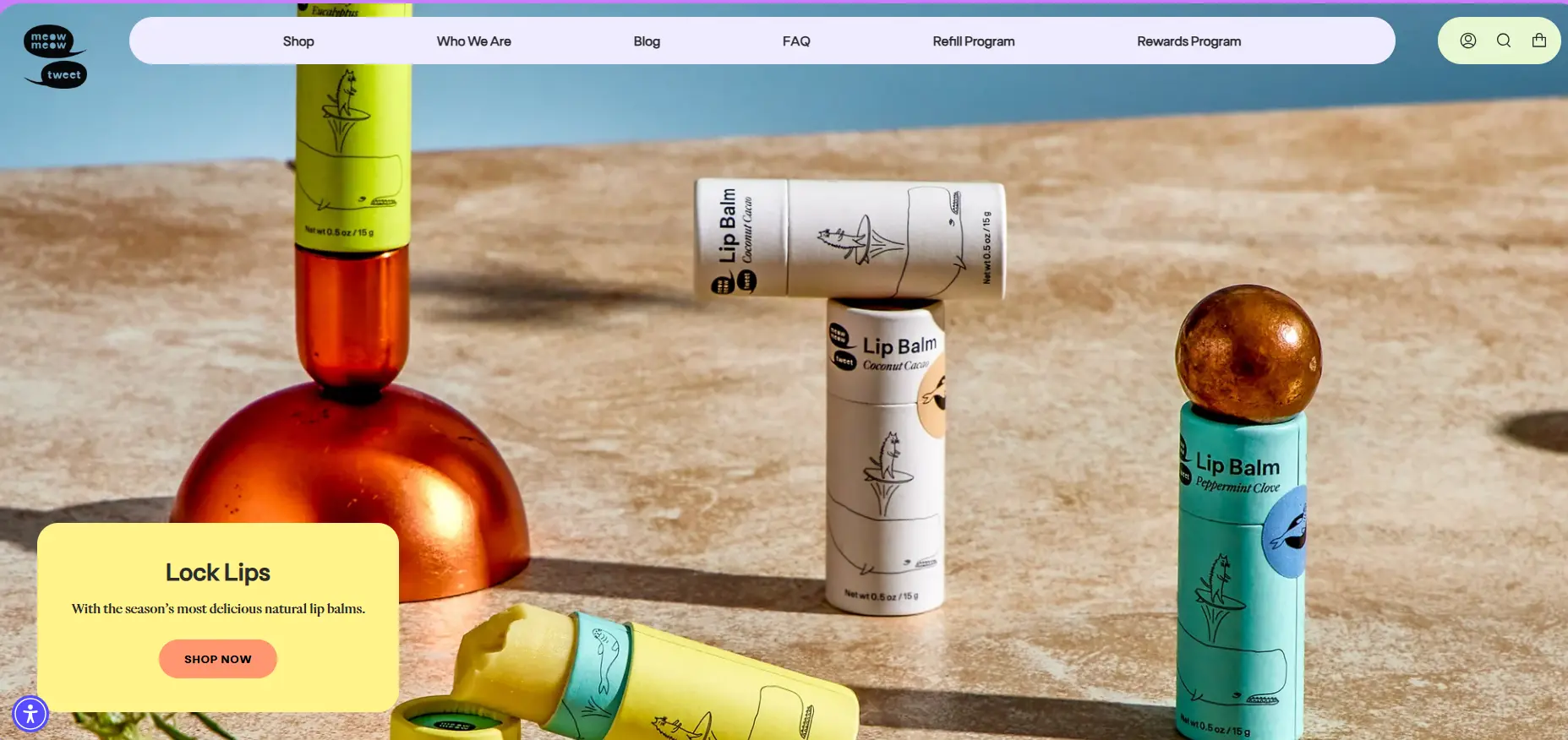
But what truly sets Meow Meow Tweet apart is how every label features hand-drawn illustrations created by CEO Jeff, giving the brand a playful personality.

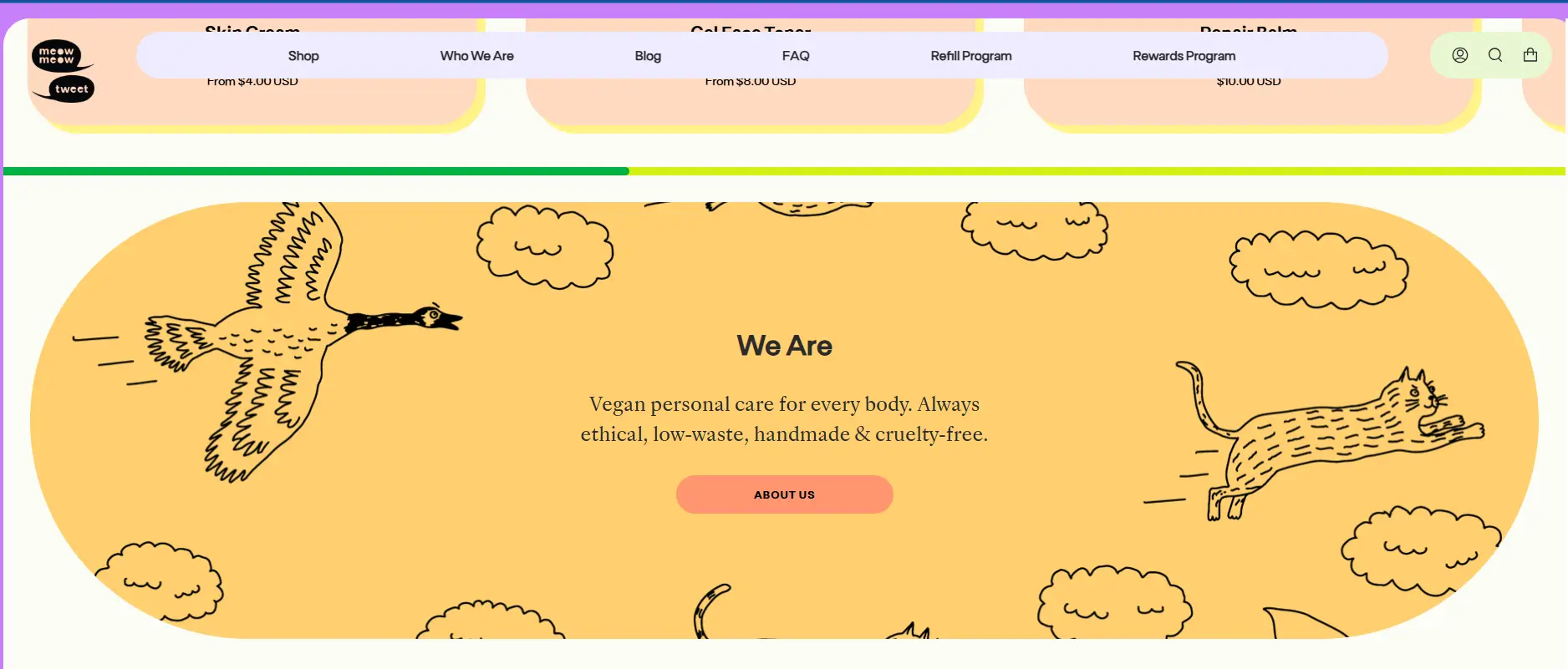
Formula for Success:
The brand didn’t rush into mass retail or paid ads. They grew organically, starting small at farmers markets and craft fairs with just $4,000 revenue in their first year. Back at that time, they focused on collecting honest feedback and refined their formulas before scaling. When West Elm discovered them and placed a $75,000 wholesale order three years later, they were ready. As demand surged, MMT decided to outsource production for its best-selling deodorant to maintain quality.
Today, Meow Meow Tweet sells about 2,000 products a month with prices ranging from $10 to $25, employs a small team of five, and continues to grow steadily — nearing $1 million in annual revenue.
6. Madsen Cycles — The Cargo Bike Brand
The whole brand starts with cargo bikes — bicycles with a large bucket on the back that can carry kids, pets, or groceries. The CEO Phil Madsen had seen cargo bikes everywhere on a trip to the Netherlands. So, he built his first prototype from scratch and decided to bring the family cargo bike culture to the U.S. — under the brand name Madsen Cycles.

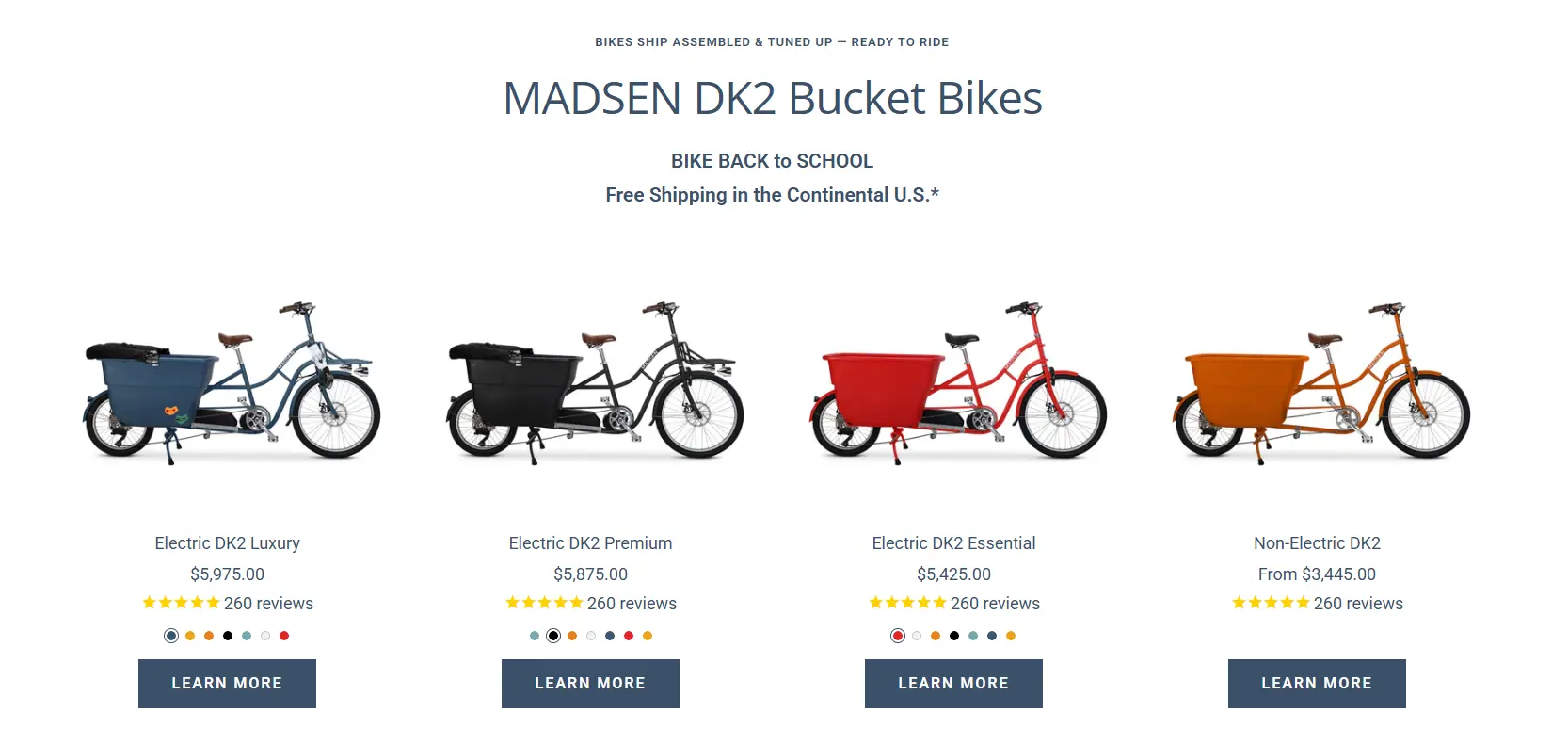
Key Lessons to Success:
When Phil Madsen introduced his cargo bike, the U.S. market showed no sign of demand. But he believed customers often don’t know what they want until they see it. So he fixed what was wrong, refined his design, and kept showing up. His persistence paid off when a trade show feature led to his first big win — a 30-bike order from a shop in Oregon.
Rather than relying on paid influencers, Madsen focuses on free word-of-mouth power. Families who rode their bikes daily, shared their experiences, and inspired others in their communities. One sighting often led to another sale, creating local clusters of loyal fans.


One of the big risks is the high Shopify shipping fee due to the size & weight, but Madsen makes it a white-glove delivery— each bike arrives tuned, nearly ready to ride, and always ships free. It’s not the cheapest route, but it’s the right one that builds long-term relationships.

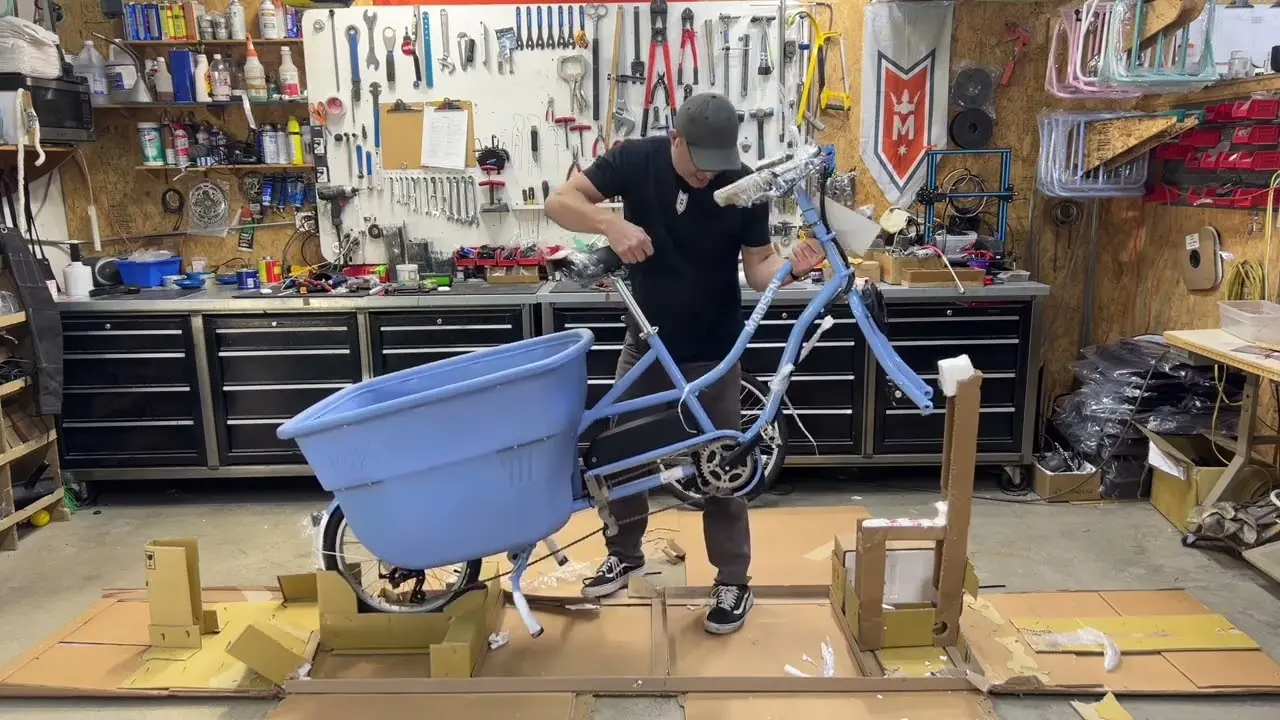
Further Reading
7. Truff — The Luxury Hot Sauce
Known for its truffle-infused hot sauce, pasta sauce, mayonnaise, truffle oil, and salt, Truff is the most recognizable luxury condiment brand with premium ingredients.

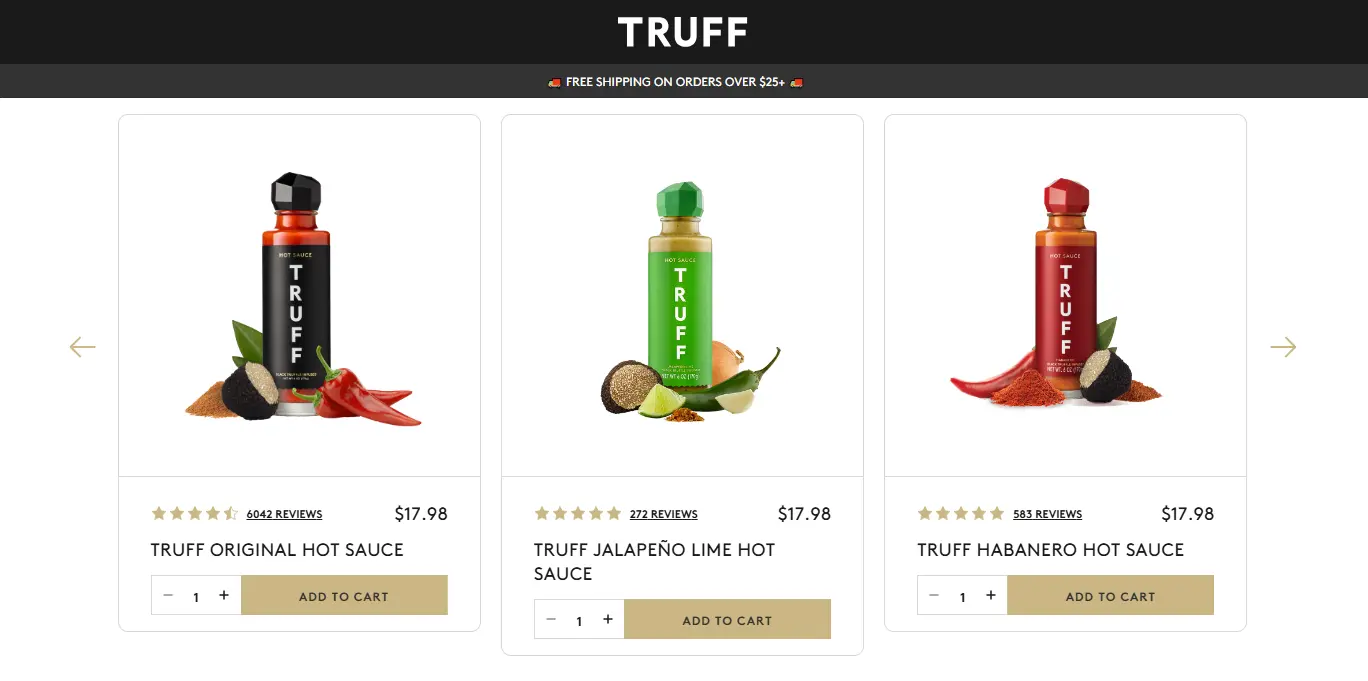
Formula for Success:
The brand’s story began not with a product, but with an Instagram account — @sauce. Guillen and Ajluni used the handle to post visually striking food content inspired by their love for streetwear and hip-hop culture. The account quickly attracted a following of over 10,000 people at that time, and became the foundation for Truff.

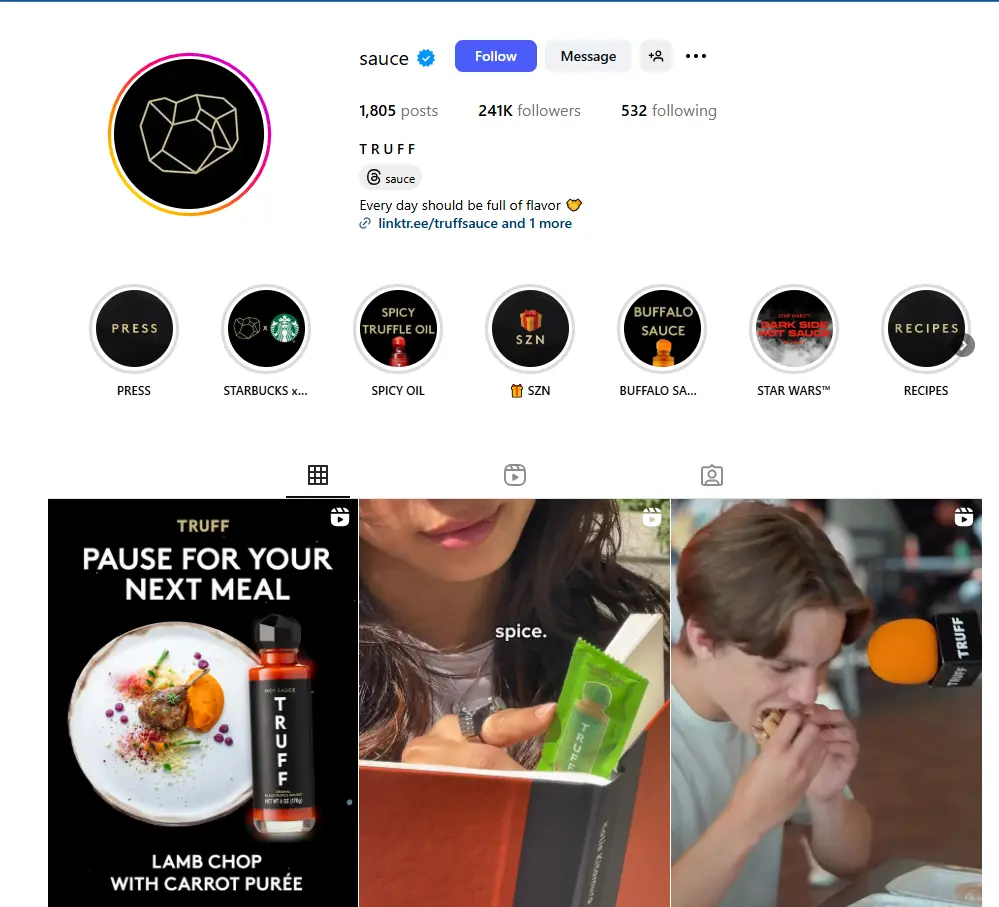
When it came to launching, Truff relied on social media and organic marketing rather than paid advertising. Guillen and Ajluni personally DM’d influencers, offering free samples and asking for honest feedback. The approach worked—influencers started posting, followers started buying, and word-of-mouth built momentum faster than traditional ads ever could.


Now, Truff is one of the top Shopify stores - sold at over 3,000 stores on Amazon, and D2C through their Shopify site.
Further Reading
One-Product vs. General Store: Which Model Fits You?
A general store sells multiple products across different categories instead of focusing on just one. General stores are perfect for the early stage of testing, when you have a few potential products but no clear winner yet. They let you experiment, gather data, and discover which items resonate with your audience without putting all your eggs in one basket.
A one-product store, on the other hand, truly shines only once you’ve identified a proven winner, something you’ve tested and know sells consistently. But without that proof, you risk putting all your effort and budget into something that hasn’t earned demand yet.
Usually, a one-product store delivers stronger results because all your effort goes toward promoting and perfecting one proven item. But it’s not that general stores are worse — they’re just better suited for discovery, while one-product stores excel at scaling a known winner. The common approach in ecommerce is that sellers will start off with a general store, identify a clear winner from their tests, then they consider building a one-product store around it, turning that hero product into the center of their brands.
5 Key Formulas for One-Product Store Success
Creating a successful single product store isn’t about luck — it’s about strategy. Here’s what the best ones have in common:
1. Start with a Proven Product
The single product store works best when your product is already proven to sell. Proof doesn’t mean one viral post or a few lucky orders. It means you’ve calculated product profit margin and know it sells through other data-backed consistency — steady traffic, repeat sales, or strong engagement across platforms. When you look at your product profitability analysis and see these signals, you know it’s worth scaling your Shopify store around it.
Further Reading
2. Test Your Market Fit
A strong market fit happens when three elements align: a clear problem, a distinct solution, and proven demand. In other words, your product should solve something real, in a way that feels new or better, and you should see measurable interest — such as sign-ups, purchases, or repeat engagement.
That said, not every slow start means your idea is a failure. Sometimes, it simply needs more time — or a few thoughtful tweaks — to see the data reveal the truth. The key is to optimize, refine, and keep a close eye on your metrics such as click-through rate, conversion rate, and customer feedback.
3. Build Direct-to-Consumer Channel
Most successful single product stores don’t rush into retail. They start a direct-to-consumer channel, where they can build relationships, test ideas, and refine their product in real time. Doing this gave them two major advantages — a product that perfectly fits their customers’ needs and passions, and a ready-made audience eager to buy it.
4. Ads Are Essential, But Not the Only
While paid campaigns are essential for reaching new audiences and generating traffic, long-term success rarely comes from ads alone. Instead, success often comes from a mix of strategies — word-of-mouth, influencer/KOL partnerships, and SEO — each channel reinforces the others. Over time, this mix not only drives sales but also builds a loyal audience that will keep coming back, even if ad performance fluctuates.
Further Reading
5. Track Performance Consistently
For a one-product store, this step is especially critical. Since the business lives or dies by a single item, missing a drop in performance could directly impact revenue.
Tracking performance isn’t about checking a single metric occasionally. It requires a complete view of your store’s health: net profit, net profit margin, cost of goods sold, ad spend per product, conversion rates, and Shopify fees— all analyzed over time.
Only by monitoring these metrics consistently can you see patterns, spot inefficiencies, and make data-driven decisions. Proper performance tracking will measure how much you actually make from your Shopify store and scale with confidence while keeping risks in check.
Spot Top Product & Keep Its Performance in Check
One product stores succeed only when their single item sells it best. That’s why every decision— from testing products to scaling with ads—all need to drive its success.
This is where TrueProfit, the #1 net profit analytics tool for Shopify, comes in. TrueProfit helps track every cost including ad spend, product cost, and shipping fees to other store expenses,so you can calculate your most accurate net profit and see exactly whether your hero product is truly contributing to the bottom line.
TrueProfit helps you:
- Get an instant view of key metrics—net profit, expenses, profit margin, and more—on a real-time dashboard.
- Monitor overall product performance and spot the most profitable/the least profitable ones.
- Measure the true value of customer against your acquisition cost
- Track marketing effort by its impact on the final bottom line.
- Check trends over time with comprehensive P&L reports to measure store performance.
With this app, you have the insights to not only optimize your product’s performance but also make strategic decisions that scale your business.
Further Reading
Final Thoughts
A one product Shopify store can be one of the most profitable and scalable models — if done right. The success stories above show that focusing on one great product allows you to simplify operations, strengthen your message, and connect deeply with customers.
If you’ve already found a winning product, this might be your sign to build a brand around it. Create a clean website, tell your story clearly, and make that one product unforgettable.
Because sometimes, selling one thing really well is all you need to build a million-dollar brand.
Further Reading
One Product Shopify Store FAQs
Can I sell one product on Shopify?
Yes! Shopify makes it easy to sell even just one product. Many successful stores start this way to test a winning product before expanding their catalog.
How many products per Shopify store?
Technically, you can add as many products as you want on Shopify. Some stores sell hundreds or even thousands of products, while others stick to just one to focus their marketing and operations.
How to create a one product store?
To create a one product store, start by choosing one standout item with clear demand and a strong value proposition. Then, build a focused Shopify store around it — from branding and product page design to optimized checkout flow. Use analytics tools like TrueProfit to track costs, margins, and performance so you can refine your marketing and scale profitably.
Which is more profitable, a single product store or multiple product store?
Profitability depends on your strategy. A single product store can be highly profitable if the product sells well, as all efforts go toward optimizing one item. Multiple product stores spread risk across various products but require more management. In short, one product stores win on focus and scalability, while multiple product stores offer stability through diversity.
What is the meaning of single product shop?
A single product shop is another way of saying a one-product store. It’s a business model where the entire store revolves around one main item, making marketing and customer experience highly focused.
What’s the best way to track profit for a one-product Shopify store?
For a one-product store, tracking profit accurately is crucial because every sale matters. TrueProfit is the #1 net profit analytics tool recommended for Shopify stores. It tracks every cost — including product cost, shipping, ad spend, and fees — so you can see your real net profit. With TrueProfit, you can monitor key financial metrics in real-time, spot trends, and make smarter decisions to grow your store.
What is not allowed to sell on Shopify?
Shopify prohibits products that are illegal, unsafe, or violate intellectual property. This includes drugs, weapons, counterfeit goods, and certain adult products. Always check Shopify’s Acceptable Use Policy for full details.
Irene Le is the Content Manager at TrueProfit, specializing in crafting insightful, data-driven content to help eCommerce merchants scale profitably. With over 5 years of experience in content creation and growth strategy for the eCommerce industry, she is dedicated to producing high-value, actionable content that empowers merchants to make informed financial decisions.

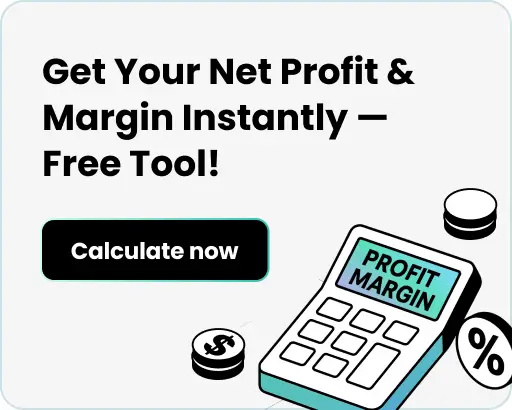
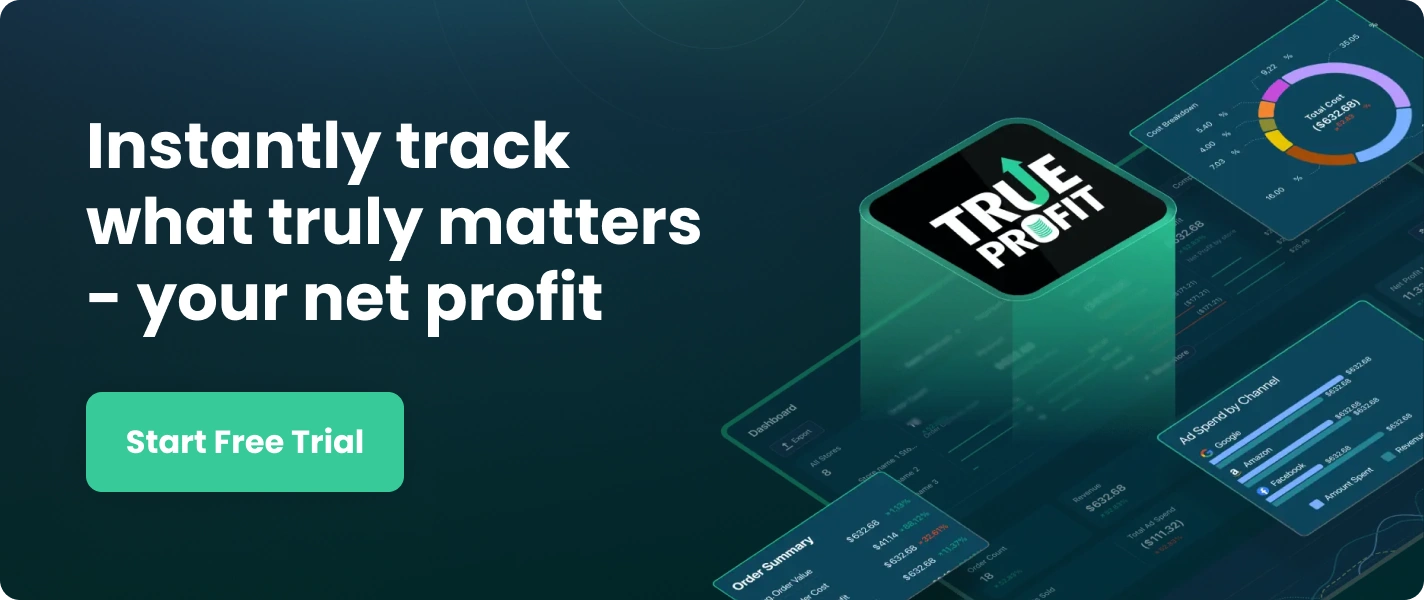
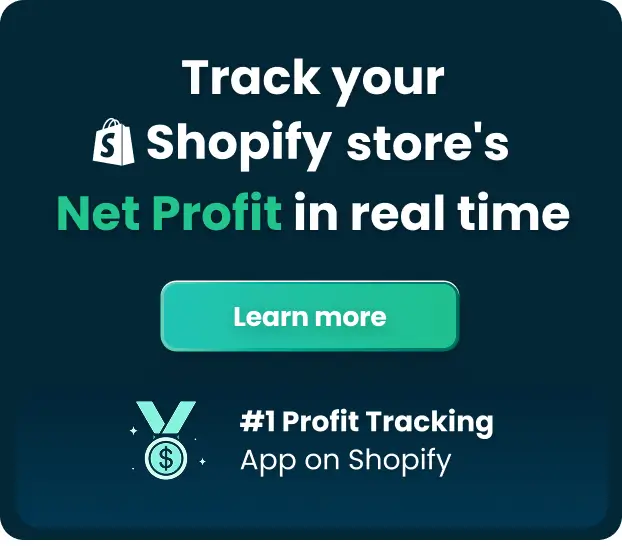
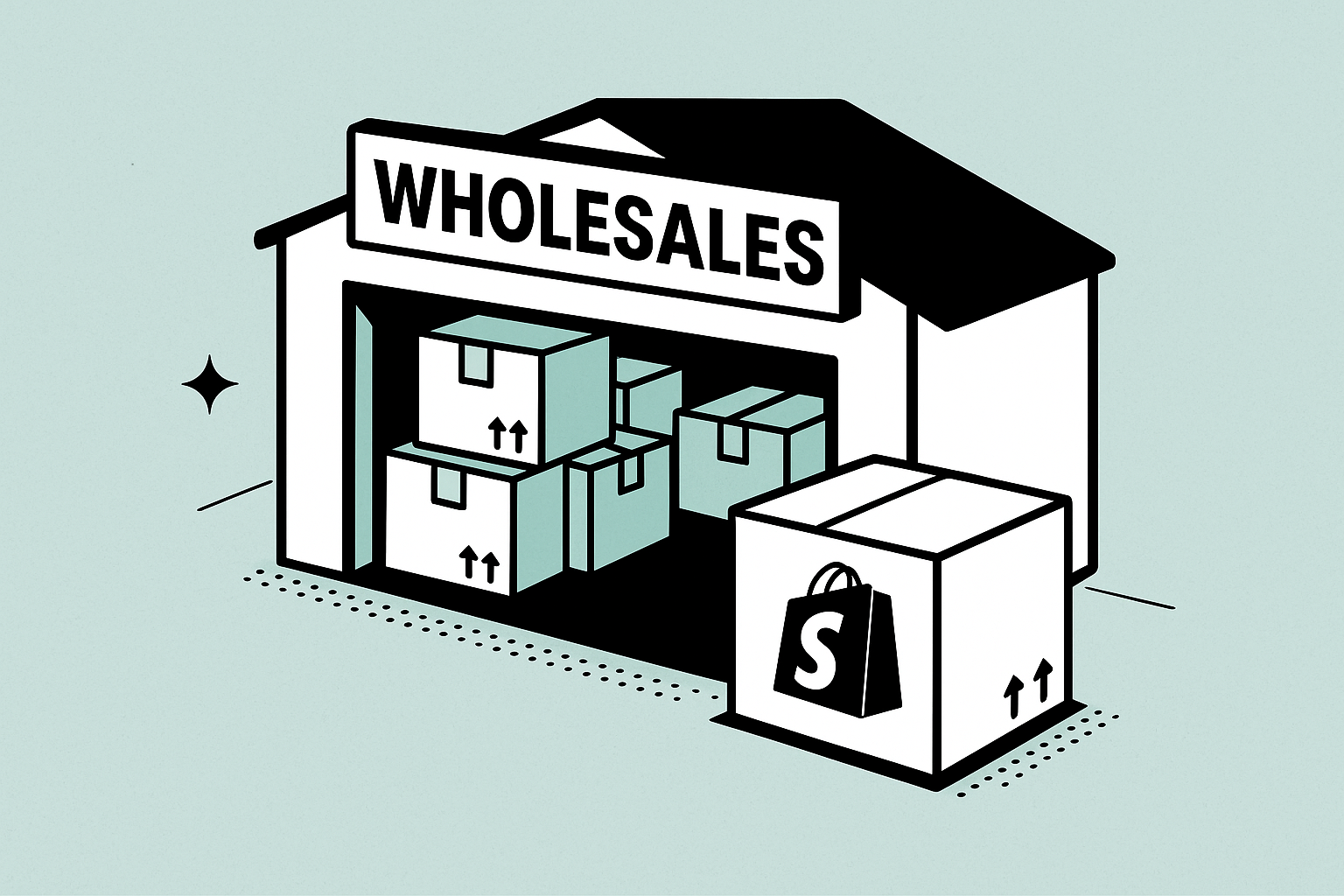
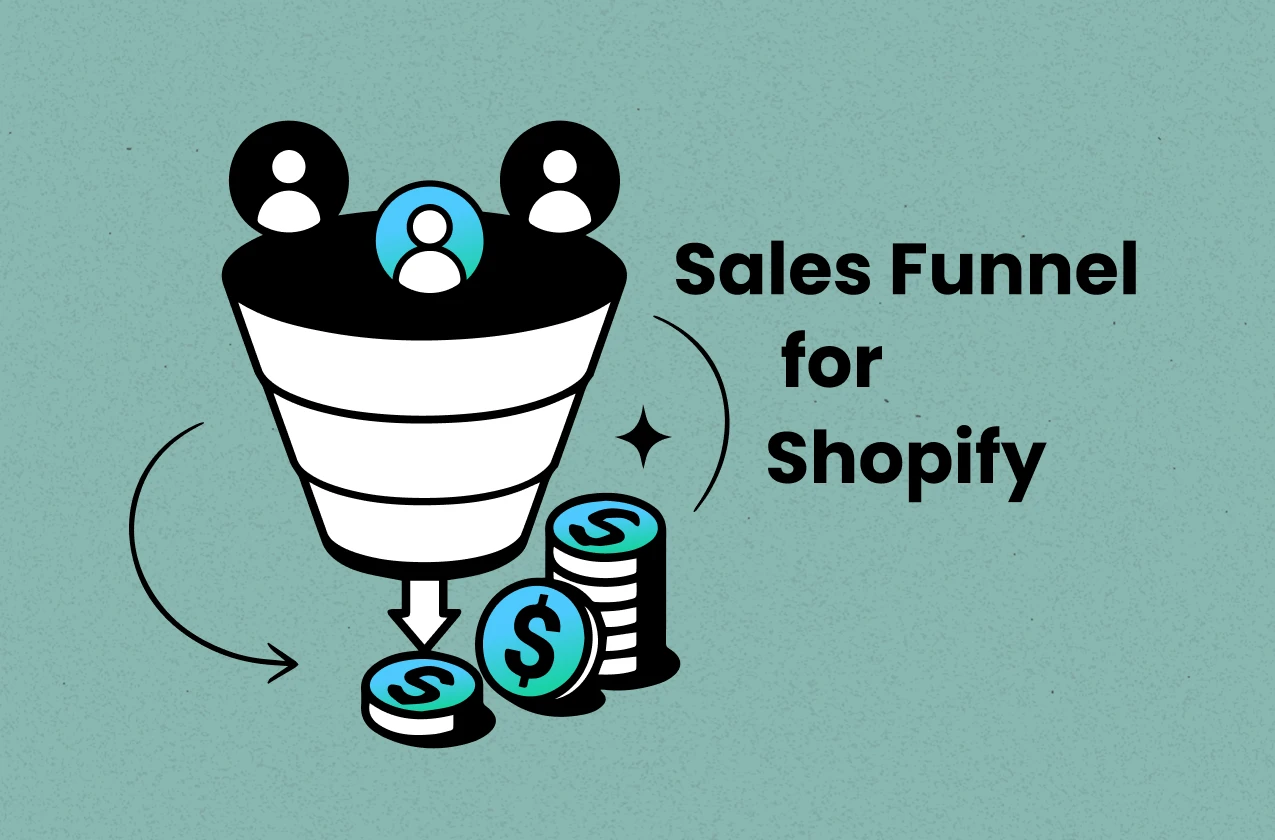
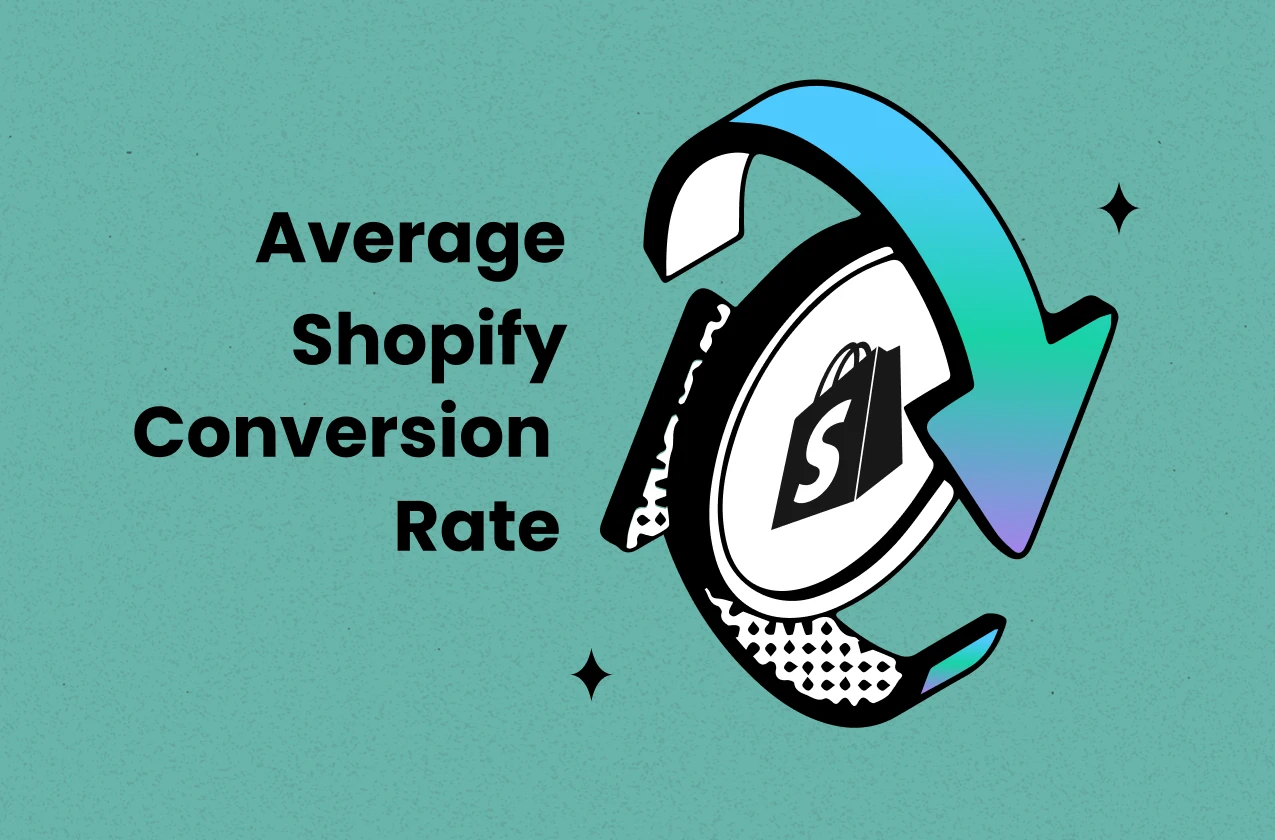
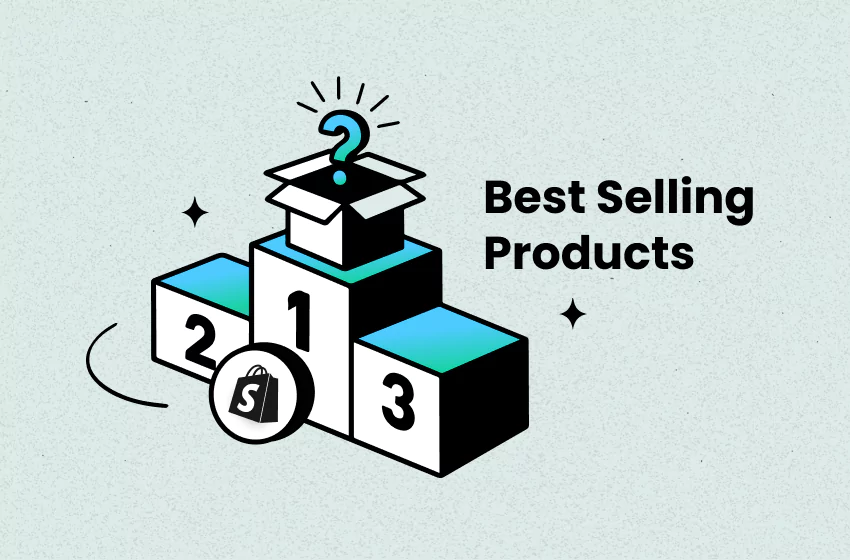
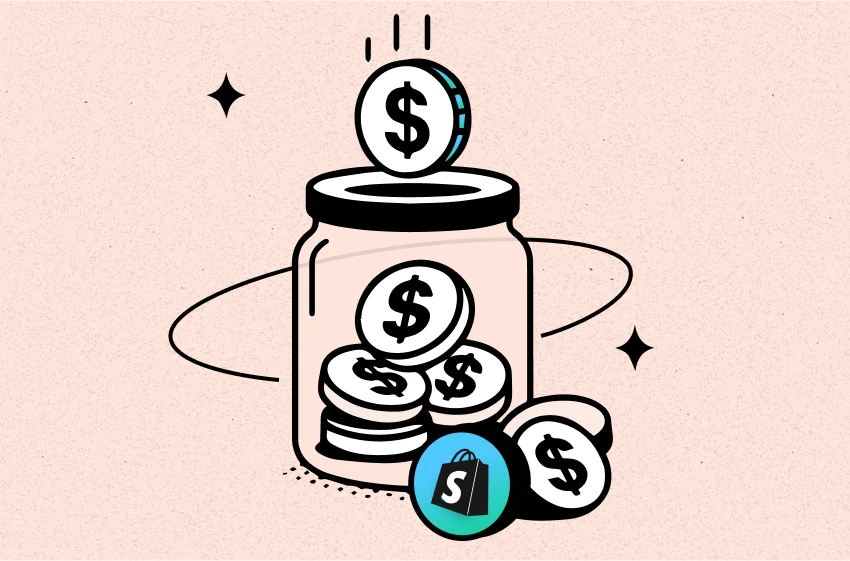
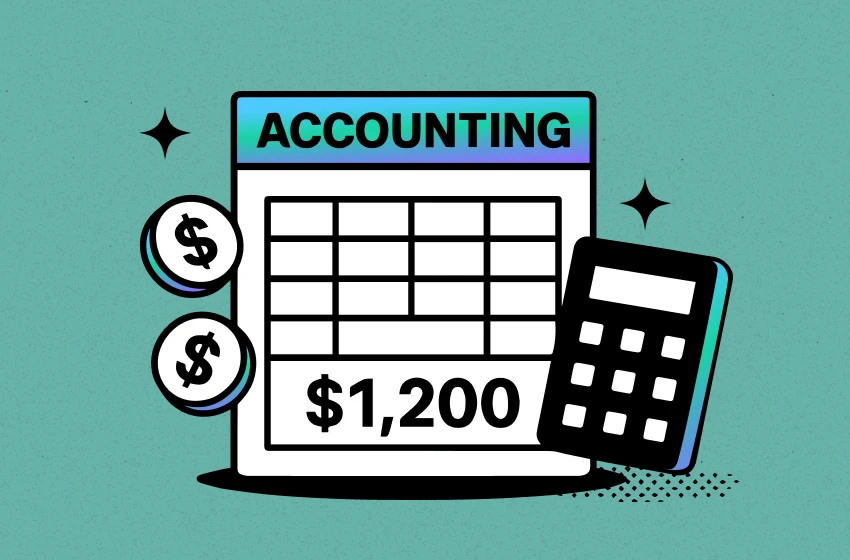
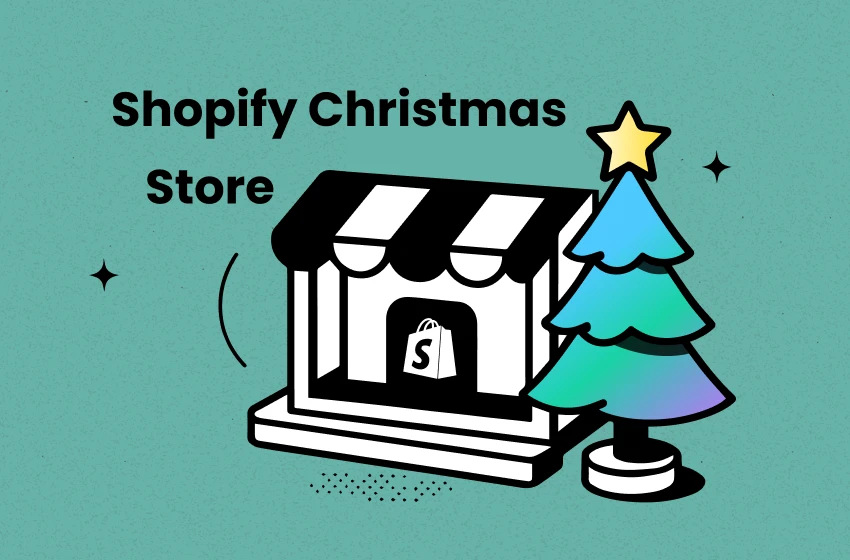
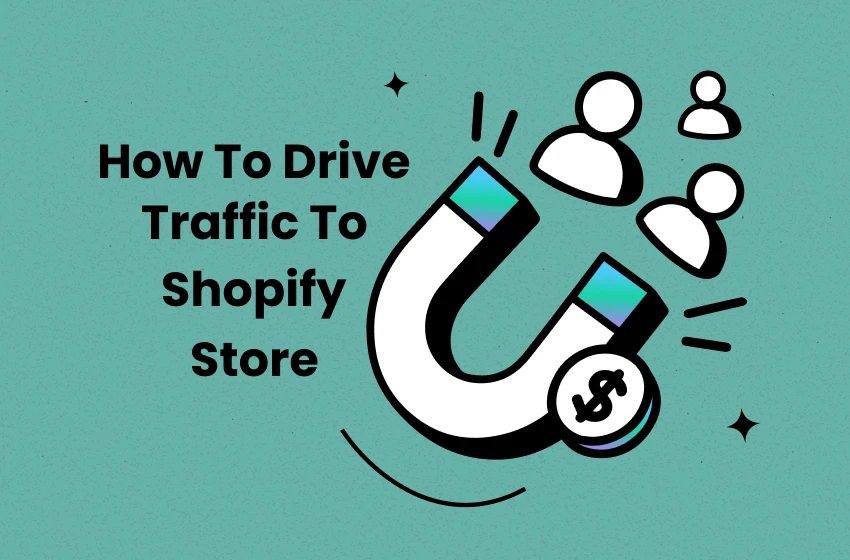
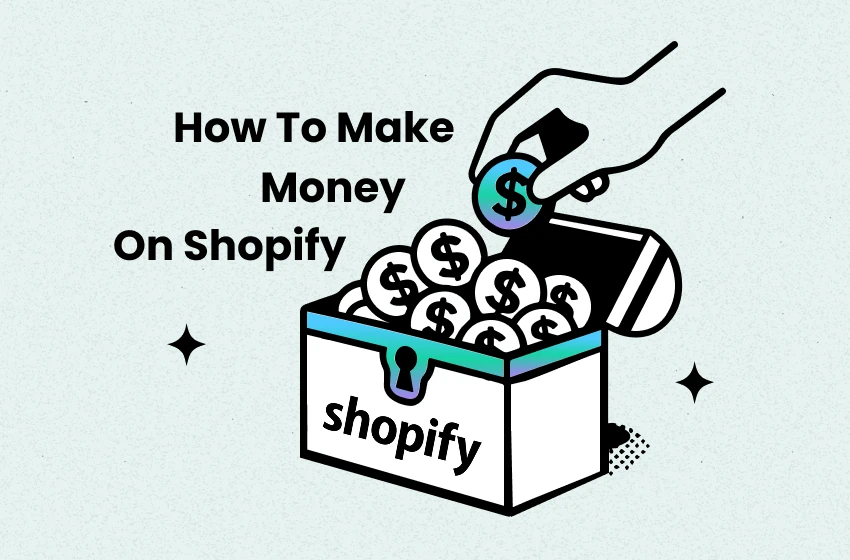
 Shopify profits
Shopify profits